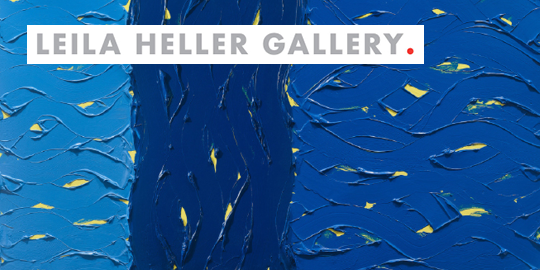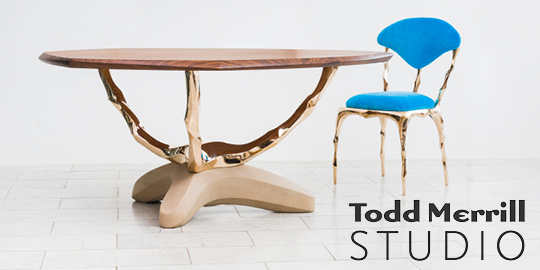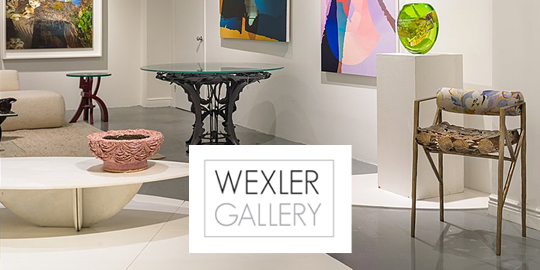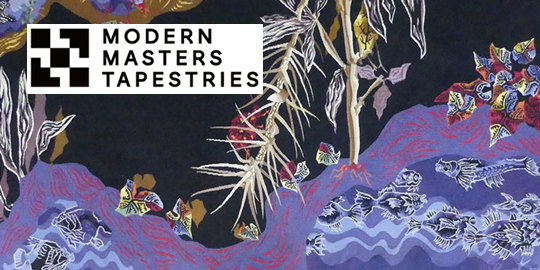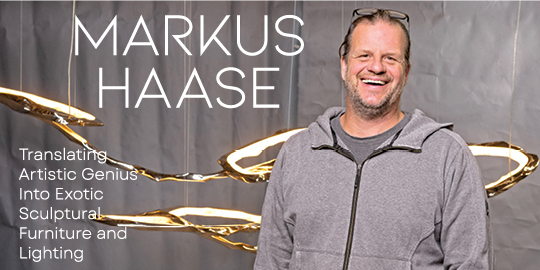Aldro T. Hibbard
American, 1886 - 1972
“But Winter or Summer makes no difference to Aldro T. Hibbard. In point of fact his pictures of the snow-clad mountains in Winter are just one ravishing glory of color and form. You feel as if you could live with these mountains and enjoy their changing color beauty every minute of the day and evening – and of the night. Looking at these pictures you feel, for the first time perhaps, as if you, too, were intimately acquainted with the over-powering color beauty of the mountains.”
- Boston Daily Globe, March 17, 1926, p. 13
Aldro Hibbard, like his namesake, 16th century Italian artist-naturalist Ulysses Aldrovandi, found enough in nature for a lifetime of contemplation and study. Trained at the Boston Museum School, Hibbard carried forth the tenets of traditional academic art into the 20th century. After his return to Boston in 1914 from a whirlwind tour of Europe, Hibbard began painting several fine winter scenes, including Winter Days, which was later purchased by the Museum of Fine Arts in 1920. Hibbard had long been interested in snow-covered landscapes, submitting one of his earliest, February Thaw, to the National Academy in 1916. He acknowledged a debt to the winter landscapes of Willard Metcalf, specifically the technique of creating a veil of delicately-toned colors, one placed next to another, to describe light and shadow on snow. In his early canvases, Hibbard practiced a similar technique that produced a delicate pointillist feeling, which he called “broken color.” Equally important was Metcalf’s practice of painting outside in the middle of winter. Hibbard found inspiration in Boston and nearby Belmont, as well as along the north and south shores of Massachusetts, but he discovered his winter’s paradise and the muse that would sustain him for the next fifty years after visiting Vermont in 1915. He exhibited widely in New York, Philadelphia and Chicago, and launched himself in the Boston art world with a one-man exhibition at the Boston Art Club in 1916. Three years later, a show of his winter scenes at the Guild of Boston Artists received glowing reviews.
The painting Canadian Rockies, Banff, Alberta, Canada, was executed after Hibbard’s visit to the area during his honeymoon with Winifred Jackman Hibbard in 1925. He discovered endless inspiration in the lakes, mountains and woodlands of the region, even traveling by horseback in order to reach some of the more spectacular views. Established in 1885, Banff National Park continues to attract artists and tourists today as Canada’s oldest National Park. Hibbard’s snow scenes of the Canadian Rocky Mountains, as well as his many landscapes of the winters he experienced in Vermont, attest to his love for painting in harsh conditions.
By the 1930s, Hibbard spent winter months in Vermont, and the rest of the year in Rockport, where he established the Rockport Summer School of Drawing and Painting and grew to become a legendary member of the North Shore artist colony and even the Rockport baseball team. Each spring, Hibbard was responsible for choosing the exact shade of red that the town would paint the fishing shack commonly referred to as Motif #1. A leader in this community, he was also active in nearby Boston, and in 1965 the Guild of Boston Artists, where Hibbard had exhibited for 45 years, mounted a retrospective exhibition of his work. About the exhibition, R. H. Ives Gammell (a leading teacher of the Boston School of painters) commented: “Paintings by Aldro T. Hibbard recall the artistic standards for which the Boston painters were nationally known throughout the first quarter of our century. The exhibition...includes many of the artist’s finest landscapes which are of a quality no painter now living, here or abroad, could remotely approach.”
- Boston Daily Globe, March 17, 1926, p. 13
Aldro Hibbard, like his namesake, 16th century Italian artist-naturalist Ulysses Aldrovandi, found enough in nature for a lifetime of contemplation and study. Trained at the Boston Museum School, Hibbard carried forth the tenets of traditional academic art into the 20th century. After his return to Boston in 1914 from a whirlwind tour of Europe, Hibbard began painting several fine winter scenes, including Winter Days, which was later purchased by the Museum of Fine Arts in 1920. Hibbard had long been interested in snow-covered landscapes, submitting one of his earliest, February Thaw, to the National Academy in 1916. He acknowledged a debt to the winter landscapes of Willard Metcalf, specifically the technique of creating a veil of delicately-toned colors, one placed next to another, to describe light and shadow on snow. In his early canvases, Hibbard practiced a similar technique that produced a delicate pointillist feeling, which he called “broken color.” Equally important was Metcalf’s practice of painting outside in the middle of winter. Hibbard found inspiration in Boston and nearby Belmont, as well as along the north and south shores of Massachusetts, but he discovered his winter’s paradise and the muse that would sustain him for the next fifty years after visiting Vermont in 1915. He exhibited widely in New York, Philadelphia and Chicago, and launched himself in the Boston art world with a one-man exhibition at the Boston Art Club in 1916. Three years later, a show of his winter scenes at the Guild of Boston Artists received glowing reviews.
The painting Canadian Rockies, Banff, Alberta, Canada, was executed after Hibbard’s visit to the area during his honeymoon with Winifred Jackman Hibbard in 1925. He discovered endless inspiration in the lakes, mountains and woodlands of the region, even traveling by horseback in order to reach some of the more spectacular views. Established in 1885, Banff National Park continues to attract artists and tourists today as Canada’s oldest National Park. Hibbard’s snow scenes of the Canadian Rocky Mountains, as well as his many landscapes of the winters he experienced in Vermont, attest to his love for painting in harsh conditions.
By the 1930s, Hibbard spent winter months in Vermont, and the rest of the year in Rockport, where he established the Rockport Summer School of Drawing and Painting and grew to become a legendary member of the North Shore artist colony and even the Rockport baseball team. Each spring, Hibbard was responsible for choosing the exact shade of red that the town would paint the fishing shack commonly referred to as Motif #1. A leader in this community, he was also active in nearby Boston, and in 1965 the Guild of Boston Artists, where Hibbard had exhibited for 45 years, mounted a retrospective exhibition of his work. About the exhibition, R. H. Ives Gammell (a leading teacher of the Boston School of painters) commented: “Paintings by Aldro T. Hibbard recall the artistic standards for which the Boston painters were nationally known throughout the first quarter of our century. The exhibition...includes many of the artist’s finest landscapes which are of a quality no painter now living, here or abroad, could remotely approach.”
Aldro Hibbard was born in 1886. He studied at the Massachusetts Normal Art School and also at the Boston Museum of Fine Arts School. He was an important founding member of the Rockport Colony as well as a professional baseball player. Hibbard taught summer classes at his studio in Bearskin Neck from 1920 to 1950. Later he set up a studio in East Jamaica, Vermont and painted winter landscapes, covered bridges and snowy towns in the mountains. Hibbard created a large body of work throughout his long career with a particular sensitivity to light.
Biography courtesy of The Caldwell Gallery, www.antiquesandfineart.com/caldwell
Biography courtesy of The Caldwell Gallery, www.antiquesandfineart.com/caldwell
Aldro Thomspon Hibbard spent most of his life in Massachusetts, where he painted striking images of the New England coastline. Over the course of his long career, Hibbard created an impressive body of work featuring landscapes, seascapes, and snow scenes. Rendered in a lively, Impressionist style, Hibbard's paintings are structured by his deep-seated interest in the interplay of light and shadow, which he translated through vivid texture and animated brushwork. This synthesis of observation and idealization informs all of his work; despite their dazzling surfaces, Hibbard's paintings were firmly rooted in his experience of the natural world. He drew inspiration directly from nature, moving throughout New England to continually refresh his visual inventory.
Hibbard gave up a promising career as a professional baseball player to pursue a life as an artist and instructor. He trained at the Massachusetts Normal Art School and the Boston Museum School, where he studied alongside Frank Benson, Edmund Tarbell, and Joseph De Camp. His talent earned him a traveling scholarship from the Boston school, which allowed him to study the art of the European Impressionists firsthand. Upon his return, Hibbard devoted his effort to turning Rockport, Massachusetts into a thriving independent art center. He opened the Rockport Summer School of Drawing and Painting in 1920, which was renamed the Hibbard School of Painting in his honor. He also established the Rockport Art Association, which attracted such prominent artists as Charles and Emile Gruppe, Max Kuehne, and William M. Paxton.
Hibbard exhibited at Legendsea Studios, his gallery in Rockport, as well as the Corcoran Gallery Biennial, the Boston Art Club, the Art Institute of Chicago, and the American Artists Professional League. He received several honors during his lifetime, including the Hallgarten Prize from the National Academy of Design, which later named him an Academician, and gold medals from the Pennsylvania Academy of the Fine Arts and the American Artists Professional League. Today, his work can be found in the Metropolitan Museum of Art, the Smithsonian American Art Museum, the Museum of Fine Art, Boston, and the National Gallery of Art.
Biography courtesy of Questroyal Fine Art, LLC, www.antiquesandfineart.com/questroyal
Hibbard gave up a promising career as a professional baseball player to pursue a life as an artist and instructor. He trained at the Massachusetts Normal Art School and the Boston Museum School, where he studied alongside Frank Benson, Edmund Tarbell, and Joseph De Camp. His talent earned him a traveling scholarship from the Boston school, which allowed him to study the art of the European Impressionists firsthand. Upon his return, Hibbard devoted his effort to turning Rockport, Massachusetts into a thriving independent art center. He opened the Rockport Summer School of Drawing and Painting in 1920, which was renamed the Hibbard School of Painting in his honor. He also established the Rockport Art Association, which attracted such prominent artists as Charles and Emile Gruppe, Max Kuehne, and William M. Paxton.
Hibbard exhibited at Legendsea Studios, his gallery in Rockport, as well as the Corcoran Gallery Biennial, the Boston Art Club, the Art Institute of Chicago, and the American Artists Professional League. He received several honors during his lifetime, including the Hallgarten Prize from the National Academy of Design, which later named him an Academician, and gold medals from the Pennsylvania Academy of the Fine Arts and the American Artists Professional League. Today, his work can be found in the Metropolitan Museum of Art, the Smithsonian American Art Museum, the Museum of Fine Art, Boston, and the National Gallery of Art.
Biography courtesy of Questroyal Fine Art, LLC, www.antiquesandfineart.com/questroyal


